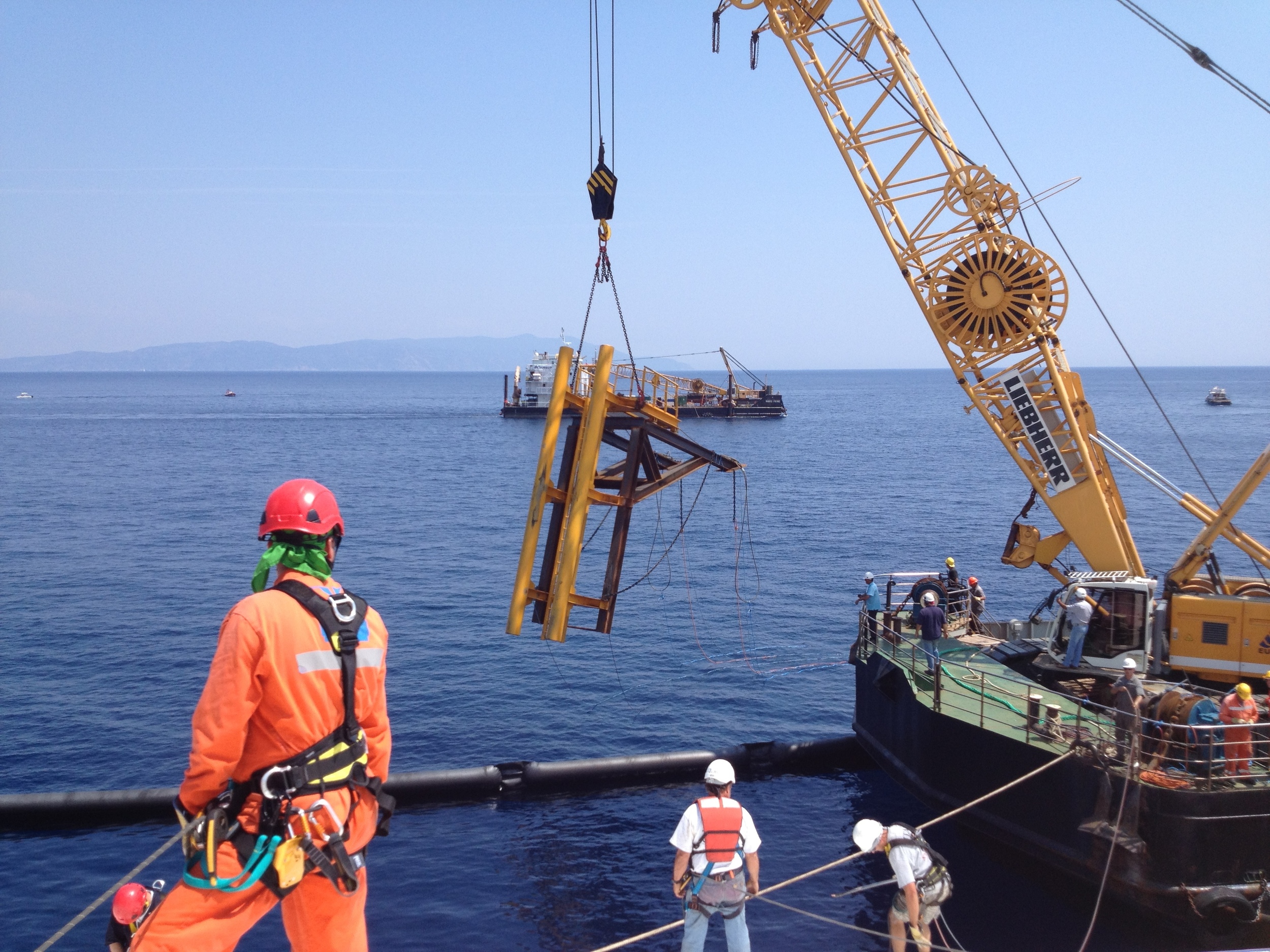Planned and used Titan Salvage assets as efficiently as possible to complete the project on a very tight schedule
Designed all aspects of construction from steel order to installation
Ultimately responsible for ensuring ladders were installed properly and on schedule
To assure safe working conditions of the crew, Titan Salvage required a method to easily board the wreck (lying at a 45 degree angle) since seas would rapidly worsen in the winter months and make it difficult for RIBs to land crew.
Utilizing both the LIDAR and multi-beam sonar scans of the ship (prepared by a subcontractor), the wreck could be very accurately realized in 3D modeling software. Using Rhinoceros 3D, I was able to design a system with which to mount a set of boarding ladders we had used on a previous job. All pictured stairs and platforms were fabricated off-site and shipped to the site by barge as fully completed units. The I-beam support structure (seen in red on the left) was built on a fabrication barge and had to fit within close tolerances without actually being able to work on the wreck itself, other than for final installation.
After one false start, based on user error on my part, the stairs fit within about 15mm. The pressure plate on the end of each beam, where it meets the hull, had to be welded before the structure was lifted into place; all fit without filler welds underneath them.
The stairs were then craned into place on the platforms and run up to other platforms and to the lifeboat decks.
This system made it easy and safe to bring personnel onto the wreck.


